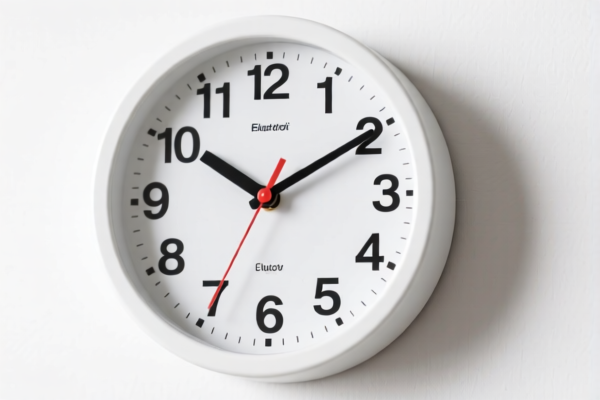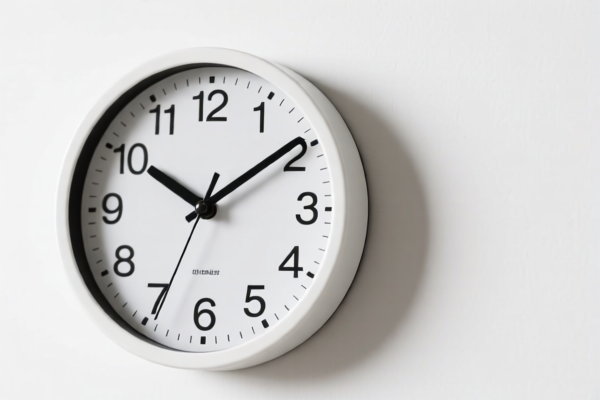| HS Code | Official Doc | Tariff Rate | Origin | Destination | Effective Date |
|---|---|---|---|---|---|
| 9105294000 | Doc | 15¢ each + 6.4%+30.0% | CN | US | 2025-05-12 |
| 9105295000 | Doc | 30¢ each + 4.3%+37.5% | CN | US | 2025-05-12 |
| 9106100000 | Doc | 36¢ each + 5.6% + 2¢/jewel+55.0% | CN | US | 2025-05-12 |
| 9106908500 | Doc | 15¢ each + 2.3% + 0.8¢/jewel+55.0% | CN | US | 2025-05-12 |
| 8507808200 | Doc | 58.4% | CN | US | 2025-05-12 |
| 8507908000 | Doc | 58.4% | CN | US | 2025-05-12 |
| 8543708000 | Doc | 55.0% | CN | US | 2025-05-12 |
| 8543908500 | Doc | 55.0% | CN | US | 2025-05-12 |




Electronic Wall Clock
An electronic wall clock is a timekeeping device that displays the time using electronic components, typically mounted on a wall. These clocks have largely replaced traditional mechanical clocks due to their accuracy, convenience, and range of features.
Material
- Case: Commonly constructed from plastic, metal (aluminum, stainless steel), wood, or glass. The material influences the clock’s aesthetic and durability.
- Display: Utilizes various technologies:
- LED (Light Emitting Diode): Bright, energy-efficient, and available in a range of colors. Segmented LED displays are common for simpler models, while matrix displays allow for more complex characters and animations.
- LCD (Liquid Crystal Display): Lower power consumption than LED, often used in clocks with a more subtle appearance.
- VFD (Vacuum Fluorescent Display): Produces a bright, clear display with a retro aesthetic, but consumes more power than LED or LCD.
- Circuitry: Printed circuit boards (PCBs) house the electronic components responsible for timekeeping and functionality.
- Power Source: Typically powered by batteries (AA, AAA, C) or AC power adapter. Some models include a backup battery to maintain time during power outages.
Purpose
The primary purpose of an electronic wall clock is to display the current time. Beyond this basic function, many models offer additional features.
Function
- Timekeeping: Accurate time measurement using a quartz crystal oscillator.
- Display Formats: Typically displays time in 12-hour or 24-hour format.
- Alarms: Many clocks include alarm functions with snooze capabilities.
- Date Display: Commonly displays the current date, and sometimes the day of the week.
- Temperature Display: Some models incorporate temperature sensors and display the ambient temperature.
- Humidity Display: Less common, but some models also display humidity levels.
- Remote Control: Higher-end models may include remote controls for adjusting settings.
- Wireless Synchronization: Some clocks synchronize with radio signals (e.g., WWVB) or internet time servers for automatic time updates.
- Backlight: Provides illumination for easy viewing in low-light conditions.
Usage Scenarios
- Homes: Living rooms, bedrooms, kitchens, offices, and hallways.
- Offices: Conference rooms, reception areas, break rooms, and individual offices.
- Schools: Classrooms, hallways, and common areas.
- Commercial Spaces: Retail stores, restaurants, and waiting rooms.
- Public Areas: Train stations, airports, and hospitals.
Common Types
- Analog Electronic Clocks: Feature hands that move to indicate the time, but are driven by an electronic movement instead of a mechanical one.
- Digital Clocks: Display the time numerically using digits. These are the most common type.
- Flip Clocks: Display the time using rotating cards or flaps. Often have a retro aesthetic.
- Projection Clocks: Project the time onto a wall or ceiling.
- Radio-Controlled Clocks: Automatically synchronize with a radio time signal for accurate timekeeping.
- Atomic Clocks: A type of radio-controlled clock that synchronizes with an atomic clock signal.
- Smart Clocks: Connect to Wi-Fi and offer features such as voice control, weather updates, and integration with other smart home devices.
- LED Matrix Clocks: Use a grid of LEDs to display the time in various customizable formats.
Electronic wall clocks can be categorized based on their value and function. The following HS codes are relevant based on the provided information:
-
9105294000: This HS code covers “Other clocks: Wall clocks: Other: Other: Valued not over $5 each”. This classification applies to wall clocks with a value of $5 or less per unit. Chapter 91 pertains to measuring, checking, testing, navigating and similar instruments, apparatus and meters. Heading 9105 specifically covers clocks and watches, electric. Subheading 9105.29 further defines this as other clocks, and 9105.29.40 specifies wall clocks valued not over $5. The total tax rate is 15¢ each + 6.4% + 30.0%.
-
9105295000: This HS code covers “Other clocks: Wall clocks: Other: Other: Valued over $5 each”. This classification applies to wall clocks with a value exceeding $5 per unit. Similar to the previous code, Chapter 91 covers measuring instruments, Heading 9105 covers clocks and watches, electric, and Subheading 9105.29 defines other clocks, with 9105.29.50 specifying wall clocks valued over $5. The total tax rate is 30¢ each + 4.3% + 37.5%.
Regarding HS codes 9105294000 and 9105295000, the value of the electronic wall clock is a critical factor in determining the correct classification. Ensure accurate valuation for customs clearance.
Customer Reviews
No reviews yet.